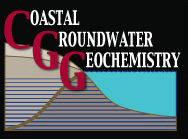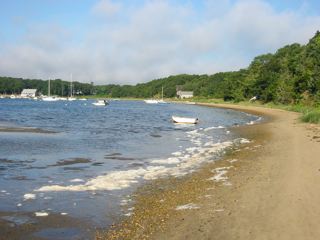Biogeochemical Cycling of Nitrogen in Permeable Sediments
In coastal watersheds with soils of high hydraulic conductivity and permeable marine sediments, a major source of coastal pollution is groundwater-transported nitrogen (N), which is added to the aquifer primarily from wastewater, fertilizers, and atmospheric deposition. This nitrogen-bearing groundwater enters coastal waters from a seepage face near the intertidal zone or flows directly into the sea as fresh, brackish or saline submarine groundwater discharge. Depending on the biogeochemical setting, removal of fixed N due to N2 gas producing processes in the near shore aquifer may significantly attenuate land-derived N loads.
This proposal is concerned with a major shift in our understanding of microbial nitrogen transformations that have been shown or proposed to occur in marine environments. The implications of these “new” pathways for the marine N cycle are largely unexplored. Of particular importance among the “new” N transformations is anaerobic ammonium oxidation (anammox), a microbial process that may be so significant as to require recalculation of existing global N budgets. Anammox provides a mechanism for “short circuiting” the N cycle by eliminating the need for nitrification prior to N2 gas production. Here, we have found compelling preliminary evidence that anammox may be an important pathway for dinitrogen gas formation in advection dominated, coarse, sandy sediments, a setting where anammox has not been previously demonstrated. Currently available procedures for measuring N2 production are not adequate to distinguish among the reaction pathways that may be occurring in these systems, and therefore a new approach is needed.
We propose to investigate the consequences of advection through permeable sediments on N transport and transformations via a series of experiments designed to simulate water transport through permeable marine sediments. The study will be particularly focused on loss of fixed nitrogen due to production of N2 gas, and will involve a new combined application of isotope pairing and membrane inlet mass spectrometry techniques to quantify and identify pathways of N2 production. Moreover, we will apply high-throughput molecular techniques to identify microbes that are important to nitrogen cycling in the permeable sediment system. The combined isotopic and molecular biological approaches will be complementary in scope and are expected to aid interpretation of nitrogen cycling and transport in this


